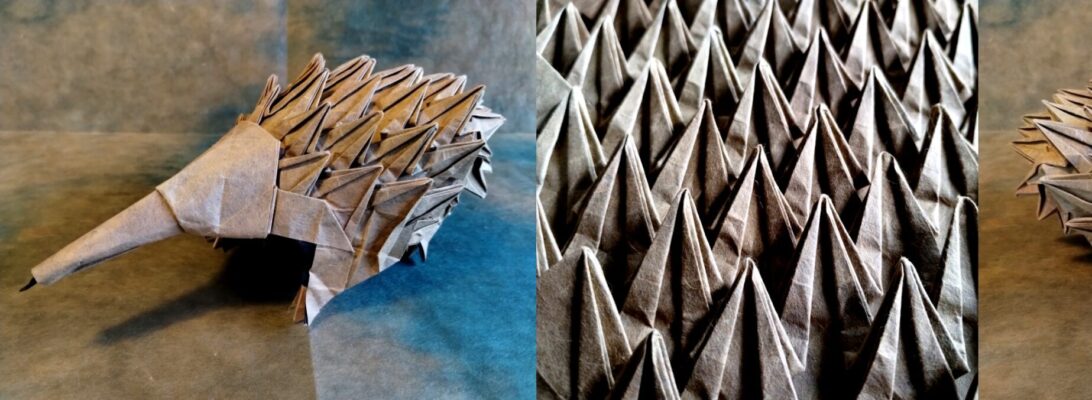I am often given 6″ origami paper by well-intentioned friends who know I do origami and assume 6″ paper is useful to me. I have lots of it – and I mostly use it to fold kusudama:

I had a pile of duo Tuttle watermelon/lime duo paper, so resolved to treat it to make it more interesting. I bought some acrylic inks a while back, and a mouth airbrush, so decided to tone the pages while learning how the airbrush works – a fun experiment.

I chose to spatter the watermelon side with white ink, and the lime side got yellow and black spatters. The effect is quite lovely and delicate – it compliments the geometry of the model really well.
I had seen a youtube tutorial of Kovács Vincéné’s “Nova” kusudama, and I thought the geometry really interesting. Like many spikey balls, 30 units in 5/3 clusters makes a nice little structure.
Continue reading


 ) A3 sheets – by the end I got pretty consistent at it but need more practice.
) A3 sheets – by the end I got pretty consistent at it but need more practice. 





















